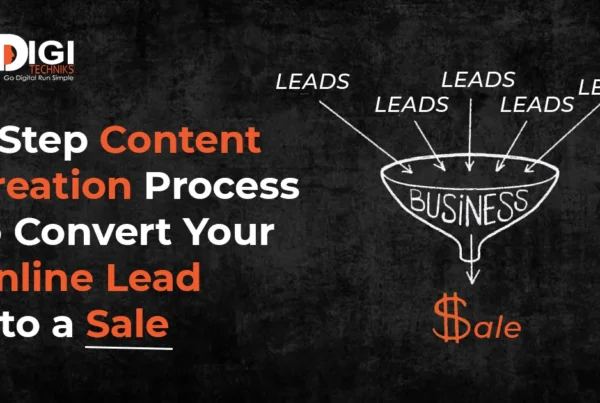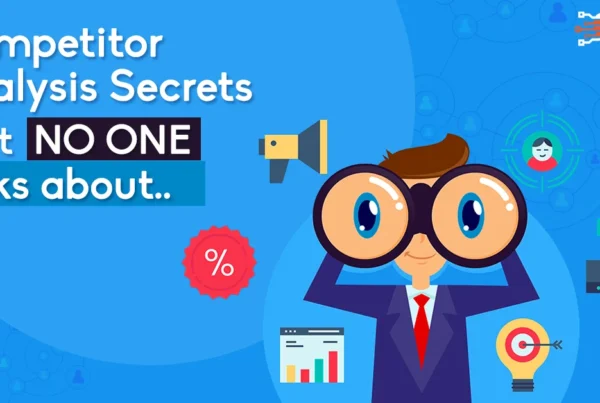Running a small business is no small feat. And, perhaps one of the most pressing challenges for SMEs and startups is marketing their business successfully while balancing budget constraints. Although digital marketing is a cost-effective and efficient way to generate brand awareness and sales leads, it has become somewhat of a battlefield with more companies than ever vying for customer attention online. Plus, digital marketing and SEO tactics, in order to produce the desired results, require time and resources — two things that most small businesses lack. This factor alone puts them on the backfoot, particularly when it comes to competing with enterprises with bigger teams and marketing budgets.
Besides, most SMBs are grappling to keep up with the constant challenges and changes in the business landscape. Many of them fail in the first year, while many others do not make it until the five year benchmark.
Despite these issues, the fact remains that if you’re a small business owner, you simply can’t ignore SEO. It’s still the best and the most economical marketing technique out there. And, because consumers inevitably search online before purchasing practically anything these days, you’ll lose out on opportunities if you turn a blind eye to SEO.
The question is, how to do it right? We’ll get to that but first, let’s get an idea of where most small business usually go wrong with their SEO efforts.
Common SEO Mistakes Small Businesses are Making
Failing to optimize the site for customers– Most small businesses end up optimizing their site for a search engine, rather than addressing the specific needs of their customers. A poor user experience affects the rank of a website in a big way.
Focusing on the wrong keywords – Many SMBs ignore long tail keywords. Instead, they focus on high-competition keywords — more than 90% of which are occupied by bigger brands.
Also, popular keywords can fetch you traffic but chances of them converting into real customers are pretty slim, as most of them only looking for general information.
Failing to measure the results – It is not unlikely for small business to get caught up in the traffic loop. However, traffic is of no use unless it converts to some substantial sales. If you are a small business owner who is keen on getting genuine leads, it would be a good idea to buy an analytics package and set up conversion tracking for your website. This will help you see for yourself which strategies are generating ROI and which aren’t.
Not focusing on link quality – Links from non-credible sources add no value to your website. Don’t feel worked up regarding the quantity of the links, instead focus on how relevant they are to your site and how valuable will the information be for your visitors.
Forgetting to optimize your site for mobile and local search results – Mobile has replaced the PC as the preferred mode of browsing in the last couple of years. Additionally, people nowadays use more specific search terms which are area specific while looking for goods and services. Not optimizing your site for local customers and mobile phone users is setting yourself up for failure.
Steps to Grow Your Small Business with SEO
Step 1: Know Your Competitors
Competitor analysis is often the first and a critical step to an effective SEO process as it provides data and insights about which tactics are being used by businesses in the industry you’re in and what’s working for them.
This analysis enables you to understand which tactics are effective and which aren’t — this knowledge helps shape your campaigns for best results. Also, this step can help you evaluate which competitors are strongest, so you can determine the strategies you would need to compete with them effectively and the amount of resources you’d require to do so.
Using proper competitor analysis tool is vital for this step. While SEMrush, Moz Pro, and Ahrefs are some of the most popular tools, SEOQuake, SpyFu, and WooRank are some decent free options for those who aren’t willing to spend money on a premium tool right away.
Step 2: Do Your Keyword Research
Keywords form the backbone of any SEO campaign. If you are looking to go organic in your marketing campaign, it is important to know how each search query on Google can help you to attract more traffic. Keywords can be broadly divided into three categories namely,
- Navigational search queries
- Informational search queries
- Transactional search queries
In the domain of organic searches only informational or transactional keywords matter. So let us take a close look at what these two mean.
Informational keywords are used by people to find general information. These keywords usually start with words like “where” and “how”. Example – “how to use a paddle boat” or “simple breakfast recipes”
Transactional keywords are used to find a place where they can engage in a transaction. These keywords indicate an intent on the part of the customer to buy something. Example – “Best sports shoes under Rs.2000”
Marketers who are keen on using paid search usually target transactional keywords because they are the low-hanging fruit — easy to rank for and optimize cost-per-click (CPC).
Step 3: Create High Value Content
If you are looking for organic way to increase traffic to your website, you should start creating high-quality content around informational keywords. Here are some ways in which you could lead traffic to your website through organic search by targeting informational queries
- Write high quality content which provide genuine and helpful information against a relevant query.
- Write a blog full of tips which could be useful for your prospective customers.
- Create how-to videos which is relevant to your business. For example, if you are a seller of travelling accessories then you can create a video on How to pack your travel bag.
- Write a detailed step-by-step guide on a topic relevant to your business.
There’s really no alternative to high value and well-crafted content when it comes to positioning yourself as an authoritative and trustworthy source of information and building awareness for your brand.
Step 4: Collect Customer Data
Customer data is your biggest asset! Turning anonymous website visitors’ data into actionable insights can help you grow your business and sales. Facebook pixel code can help you with this.
Facebook pixel code is an analytics tool which helps you measure the effectiveness of your marketing campaigns by giving you a clearer idea of visitors’ activity on your website. Facebook Pixel collects data that can help you to optimize ads, track conversions from Facebook ads, remarket your ad to people who have already bought something from your website, and build targeted audiences for future ads. Facebook Pixel can help you to get better ROI and improve your conversion ratio.
Step 5: Retarget With An Enticing Lead Magnet
Most website visitors will hesitate to share their personal data. But with a lead magnet, it’s possible to convince them to do that. A lead magnet is an incentive that you can offer to potential customers in exchange for their email address or other contact information. It can be a resource such as a free ebook, webinar or demo that your prospects will find valuable enough to be willing to access it by submitting their email address.
Step 6: Build & Nurture Your Email List
It’s not enough to get your prospects to sign up. The key to getting the most out of your email list is to turn subscribers into loyal, paying customers. To accomplish this, you need to nurture your email list effectively. Here are some ways to do so:
- Be consistent with your communication
- Stay focused on adding value
- Don’t be pushy or too sales-y
- Deliver content that resonates with your audience
Step 7: Rinse & Repeat
To increase your number of customers and sales through your SEO process, it’s important to target those leads who have shown interest through the lead magnet. For this, you can push the tripwire once in 15 days to the leads. What’s a tripwire? It’s a low priced offer that leads find hard to resist and get converted into customers.
The trick here is to lure them with something of value (a demo, consultation, heavily discounted product or service etc.) that they can avail without spending a big amount. Because tripwires are low cost, people are more likely to try it out. Once they experience the benefits that the tripwire has offered, they are be more likely to purchase the core offer.
Following these steps, you can start seeing the benefits from SEO. While it’s not an overnight process, being consistent with it will show results in a few weeks’ time.
If you’d like to know where you stand with your current SEO efforts and whether your site’s SEO performance is up to the mark, then try our free SEO site audit. This can be a great way to identify and implement the SEO tactics and digital marketing strategies most effective in growing your small business.
Learn the exact fail-proof system that we use for our clients to convert their social media contacts to contracts without playing the guesswork game or spending a ton of money.
Do you want to get a personalised 1-to-1 discovery session?
Book your 1-to-1 discovery call with us today!
FAQs
1. Why does SEO matter for small and medium businesses (SMBs)?
SEO boosts organic visibility, builds credibility, and drives targeted leads—helping SMBs compete with larger brands and grow sustainably.
2. What are the key steps in an effective SEO strategy for SMBs?
Core steps include: defining goals, researching keywords (informational vs. transactional), building content and landing pages, setting up tracking systems, and using remarketing.
3. How should SMBs target informational vs transactional keywords?
Use informational keywords to educate and build trust via blogs, while transactional keywords should appear on landing or product pages to convert visitors.
4. What’s the role of data collection and remarketing in SEO?
Systems like tracking pixels, cookies, email opt-ins help collect user data enabling refined targeting and remarketing campaigns to boost conversions.
5. How should SMBs use paid search alongside SEO?
Combine SEO and SEM: SEM offers quick visibility for commercial keywords, while SEO builds long-term organic ranking and reduces acquisition costs over time.



